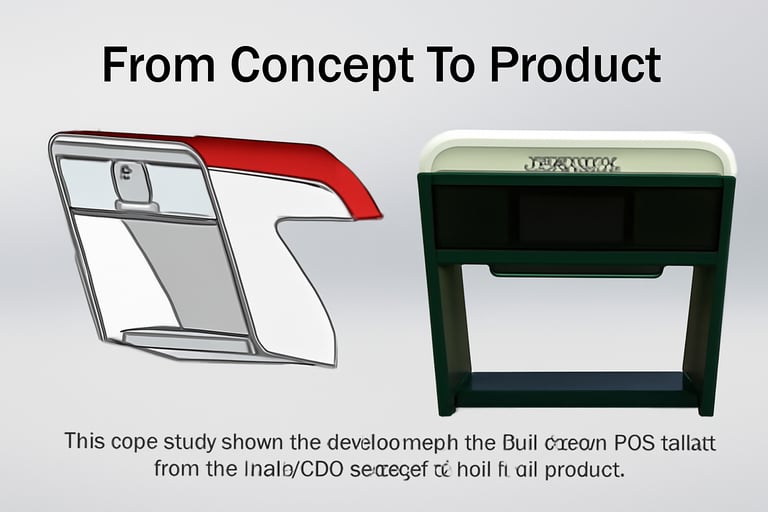Welcome , challenge us for your next project Let's see how we can help with your product development journey.
Case study
From concept to product
AI Vision : From concept to product
Client: AI Wearable Startup
Industry: Consumer Electronics
Product: Smart Fitness Device Enclosure
Objective: Fast prototyping and low-volume production for enclosure design validation.
Challenge:
The client needed to quickly validate the enclosure design for their fitness device with precise mechanical components, high-quality surface finishes, and fast turnaround, all while managing costs.
Solution:
CNC Machining:
Pros: High precision, durable, excellent surface finish, ideal for functional prototypes.
Cons: Slower for complex designs, more expensive for small volumes.
Vacuum Casting:
Pros: Fast turnaround, cost-effective for low volumes, excellent for appearance prototypes.
Cons: Less precise, not as durable as CNC, limited material choices.
Implementation:
CNC machining was used for functional prototypes to test mechanical components.
Vacuum casting was used for appearance prototypes, allowing for quick design validation with multiple color and texture options.
Outcome:
Speed: CNC provided precise testing, while vacuum casting offered fast design feedback.
Cost Efficiency: Combining both methods balanced time and cost, with CNC used for functional tests and vacuum casting for design iterations.
Development: The client advanced to user testing and design refinement, leading to faster market readiness.
Conclusion:
CNC machining is ideal for precision and functional testing, while vacuum casting excels in appearance prototypes with quick turnaround and low-volume production. Combining both allowed the client to efficiently move from concept to product.


Quality
Prototype & Small batch production Manufacturing
Upper Rapid Workshop Co.,Ltd
Support
Facility: Building C, Shengguang Industrial Zone, No. 152 Shajing East Ring Road, Bao'an District, Shenzhen
Office: Room 1702, 7th Floor, Vanke Xingcheng Xingchen Building, Bao'an District, Shenzhen
service@upperprototype.com
© 2025. All rights reserved.
